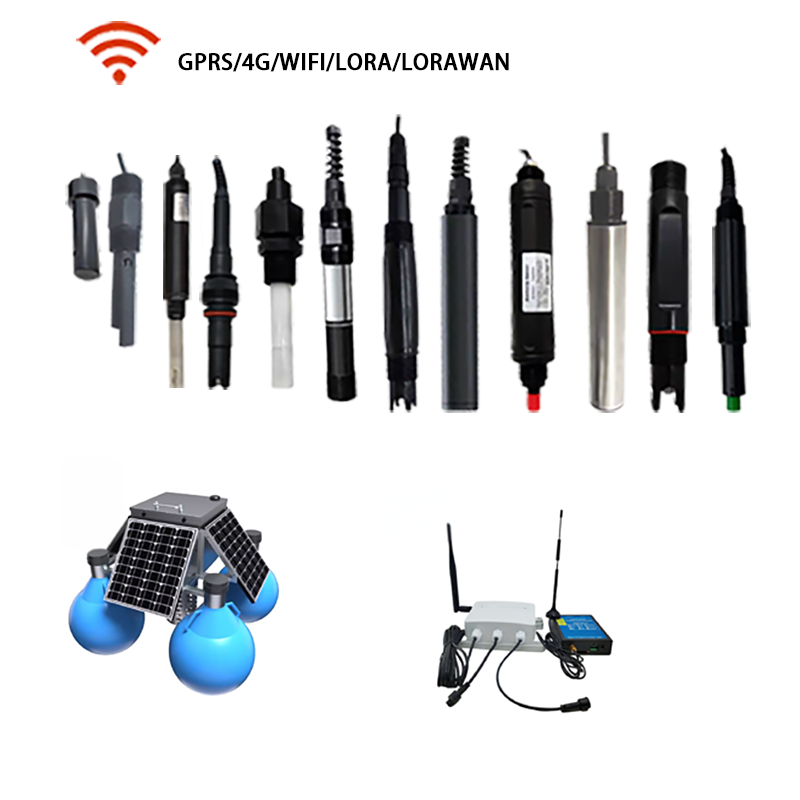Dissolved oxygen (DO) sensors are critical tools in water quality monitoring, especially in Southeast Asia, where diverse ecosystems, rapidly growing industries, and climate change pose significant challenges to aquatic environments. Here’s an overview of the applications and effects of dissolved oxygen sensors on water quality in the region.
Applications of Dissolved Oxygen Sensors in Southeast Asia
-
Aquaculture Management:
- Southeast Asia is one of the largest producers of aquaculture, including fish and shrimp farming. DO sensors are vital for monitoring oxygen levels in aquaculture ponds and tanks. By ensuring optimal DO levels, aquaculturists can prevent hypoxia (low oxygen conditions) which can lead to fish kills and reduced productivity. Sensors help in optimizing aeration processes, thereby improving growth rates and feed conversion efficiency.
-
Environmental Monitoring:
- Continuous monitoring of water quality in rivers, lakes, and coastal areas is crucial for assessing the health of aquatic ecosystems. DO sensors help detect changes in oxygen levels that could indicate pollution, organic loading, or eutrophication. By providing real-time data, these sensors allow for timely interventions to mitigate environmental degradation.
-
Water Treatment Facilities:
- Municipal and industrial water treatment facilities in Southeast Asia use DO sensors to optimize biological treatment processes. By monitoring oxygen levels in aerobic treatment systems, operators can enhance the efficiency of wastewater treatments, ensuring compliance with environmental regulations and improving the quality of discharged effluents.
-
Research and Academic Studies:
- Researchers studying aquatic ecosystems, biodiversity, and the impacts of climate change utilize DO sensors to gather data on oxygen dynamics in various water bodies. This information is essential for understanding biological processes, community composition, and ecological health.
-
Recreational Water Quality:
- In tourism-centric nations like Thailand and Indonesia, maintaining water quality in recreational areas (beaches, lakes, and resorts) is crucial. DO sensors help monitor oxygen levels to ensure they are safe for swimming and other recreational activities, thereby protecting public health and preserving the tourism industry.
-
Industrial Applications:
- Various industries that discharge into water bodies (e.g., agriculture, textile, and food processing) utilize DO sensors to monitor their wastewater outflows. By measuring oxygen levels, these industries can assess the potential impact of their discharges on local waterways and make necessary adjustments.
Effects of Dissolved Oxygen Sensors on Water Quality
-
Enhanced Monitoring and Response:
- The use of DO sensors has greatly improved the ability to monitor aquatic systems. Real-time data allows for immediate responses to oxygen depletion events, thereby reducing negative impacts on aquatic life and ecosystems.
-
Informed Decision-Making:
- Accurate DO measurements enable better decision-making in water resource management. Governments and organizations can use this data to develop policies and implement practices that protect water quality, such as setting limits on nutrient discharges from agriculture and industry.
-
Ecosystem Health Improvement:
- By identifying areas suffering from low dissolved oxygen, stakeholders can implement restoration efforts. This can include measures to reduce nutrient runoff, improve wastewater treatment processes, or restore natural habitats that enhance oxygenation.
-
Support for Climate Change Adaptation:
- As the impacts of climate change become more pronounced, monitoring DO levels can provide insights into the resilience of aquatic ecosystems. Sensors can help identify trends and shifts in oxygen levels due to temperature changes, helping communities adapt and manage their water resources more effectively.
-
Public Awareness and Engagement:
- The availability of data from DO sensors can foster public awareness about water quality issues. Engaging communities in monitoring efforts can promote stewardship and encourage practices that protect local ecosystems.
Challenges and Considerations
- Investment and Maintenance Costs: While the benefits of DO sensors are significant, there may be barriers related to the cost of purchase and maintenance, particularly for small-scale aquaculture operators and rural water treatment facilities.
- Technical Knowledge and Training: Understanding how to interpret data and respond to findings requires training. Building local expertise is essential for maximizing the benefits of DO monitoring technologies.
- Data Management: The volume of data generated by DO sensors necessitates robust data management and analysis systems to turn raw data into actionable information.
Conclusion
Dissolved oxygen sensors play an essential role in managing water quality across Southeast Asia, influencing a wide range of applications from aquaculture to environmental monitoring and municipal water treatment. By providing real-time, accurate information about oxygen levels, these sensors support sustainable practices that can enhance the health of aquatic ecosystems, protect public health, and adapt to the challenges posed by population growth and climate change in the region. Continued investment in technology, training, and data management will further enhance the impact of dissolved oxygen monitoring on water quality management in Southeast Asia.
Post time: Dec-26-2024


